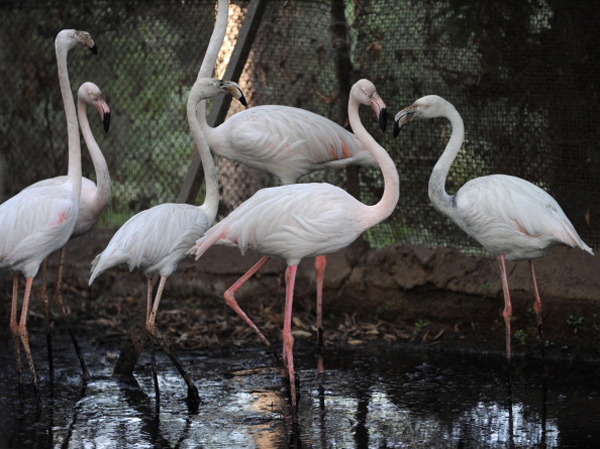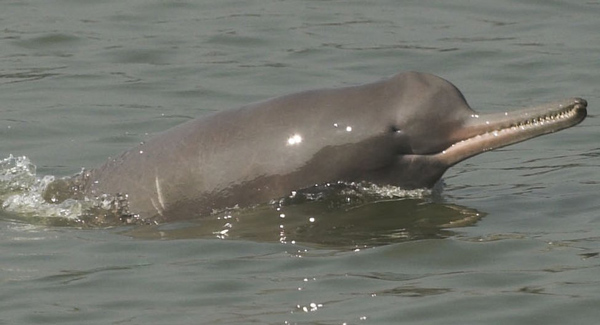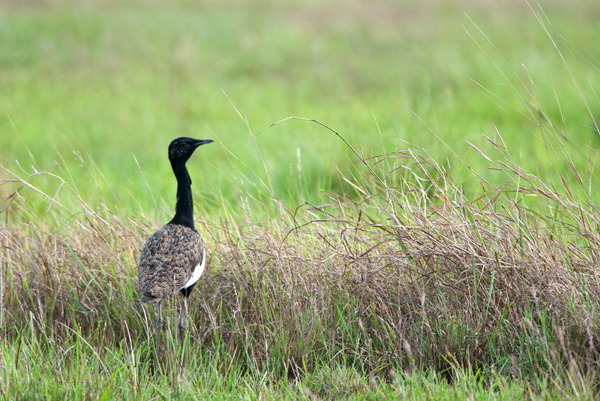Australia sounds alarm but India still deaf to endangered species

It is simply human nature to move on to different places in search of better living conditions. Thousands leave their homelands every day in pursuit of more money or safety. But sadly, animals and plants have no such option; they have to remain in their natural ecosystems.
A Gangetic Dolphin won't swim in the sea. Migrating Flamingos can't change their itinerary to fly via Dubai. It is their fate to remain within their time-tested homes and migration paths, which is why conservation is a necessity.
The Australian federal court, on 5 August, stayed the Indian conglomerate Adani Group's coal mining projects in eastern Australia.
It said the environmental study for the project did not include two endangered species -- yakka skink (lizard) and ornamental snake - that would be affected by mining. It found that the Australian environment minister Greg Hunt ignored his own department's warning about these species.
The court decision made news, but a minister's action of ignoring advice is nothing new for Indians.
Here are five examples from India where the survival of species was threatened by projects because the government didn't listen to its own experts' advice.

Photo: AFP/Sam Panthaky
At first, the desert of Kutch, Gujarat, looks like a drab combination of dry grass, barren land and bright white salt. But it's also home to a fascinating variety of animals.
Flamingos flock in such huge numbers that the veteran birdwatcher Salim Ali called it the "Flamingo City". Imagine half-a-million of the pink birds flock together against a stunning white backdrop.
Now imagine a highway running through it, with myriad trucks and jeeps of the Border Security Force. That's what the government wants, since the desert extends into Pakistan's Sindh province.
After being rejected twice by the National Board of Wildlife, the project was approved by a reconstituted Board last year, on the grounds of promoting security and also tourism.
Crumpled packets of potato chips and soft drinks bottles. You get the picture.
Flamingos weren't the only ones caught on the wrong foot. The Kutch highway project threatens to disrupt the ecosystem at Shravan Kavadia, known as the world's only inland mangrove forest. Since mangroves grow in a combination of salty and fresh water, they thrive where rivers meet the sea, like in the Sunderbans. And because the Kutch desert is uniquely salty with a periodic inflow of fresh water, it houses this growth despite being 100 km away from the sea.
In fact, Gujarat's own biodiversity board wanted Kavadia recognised as a global biodiversity heritage site. This was ignored to clear the way for the highway.
Despite assurances of building culverts to let water through, the project threatens to block the natural flow of water, putting the consumers of this sweet-salty mix into danger. All because of 'security'.

Speaking of national security, this rare hornbill species found on Narcondam island in the Andaman & Nicobar Islands is threatened by a radar station of the Coast Guard.
The National Board of Wildlife in 2012 had made a site visit to the island and found that the project threatened the hornbills, which are found only on that island in the whole world.
Just 300 of them are left. After much pressure, the ministry rejected the project. However, the NDA government began reconsidering the project soon after taking office. It is inclined to clear it in view of "national security considerations". All eyes are on the reconstituted NBWL, which needs to clear the project first.

The UPA government declared the river dolphin as the National Aquatic Animal. Then it cleared a project that damaged its habitat.
The project sought to draw water from the Chambal river near Kota, in Rajasthan. Experts in the National Board of Wildlife warned that this would reduce the water flow in the river, choking the last remaining dolphins and gharials (alligators). The environment ministry overruled these warnings and approved the project.

Himalayan dams are the big thing in the hydroelectricity sector. These dams are come up in river valleys, and release water periodically to generate electricity. But this causes the river downstream to swell suddenly, more than ever before.
The threatened birds of the sub-Himalayan region prefer these downstream patches for nesting, as they are just moist enough after the monsoon.
But releasing large amount of water suddenly to generate hydropower would submerge these nesting grounds. The birds include the Bengal florican - of which there are just 500 left in the world.
The environment ministry had even prepared a Bengal Florican Recovery Plan in 2011, a draft of which says that the species is "almost eliminated" because of dams and irrigation schemes, among other causes.
In fact, Himalayan dams are a huge concern. A 2012 study by Delhi-based scientist Maharaj Pandit and China-based Edward Grumbine found that these projects would likely lead to a "significant loss of species" - 29 species and 42% of forest cover by 2025.
They also flagged the lack of interest in the forest bureaucracy to appreciate loss of "uncool" species.
"No projects have been rejected because loss of biological diversity has been cited, except in rare cases involving protected areas and flagship species such as the tiger," the authors wrote.
Good on you, yakka skink and ornamental snake. You are lucky India is not your natural habitat.







![BJP's Kapil Mishra recreates Shankar Mahadevan’s ‘Breathless’ song to highlight Delhi pollution [WATCH] BJP's Kapil Mishra recreates Shankar Mahadevan’s ‘Breathless’ song to highlight Delhi pollution [WATCH]](https://images.catchnews.com/upload/2022/11/03/kapil-mishra_240884_300x172.png)

![Anupam Kher shares pictures of his toned body on 67th birthday [MUST SEE] Anupam Kher shares pictures of his toned body on 67th birthday [MUST SEE]](https://images.catchnews.com/upload/2022/03/07/Anupam_kher_231145_300x172.jpg)






